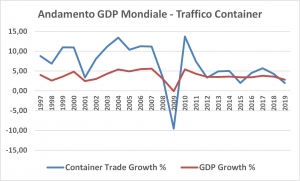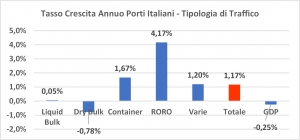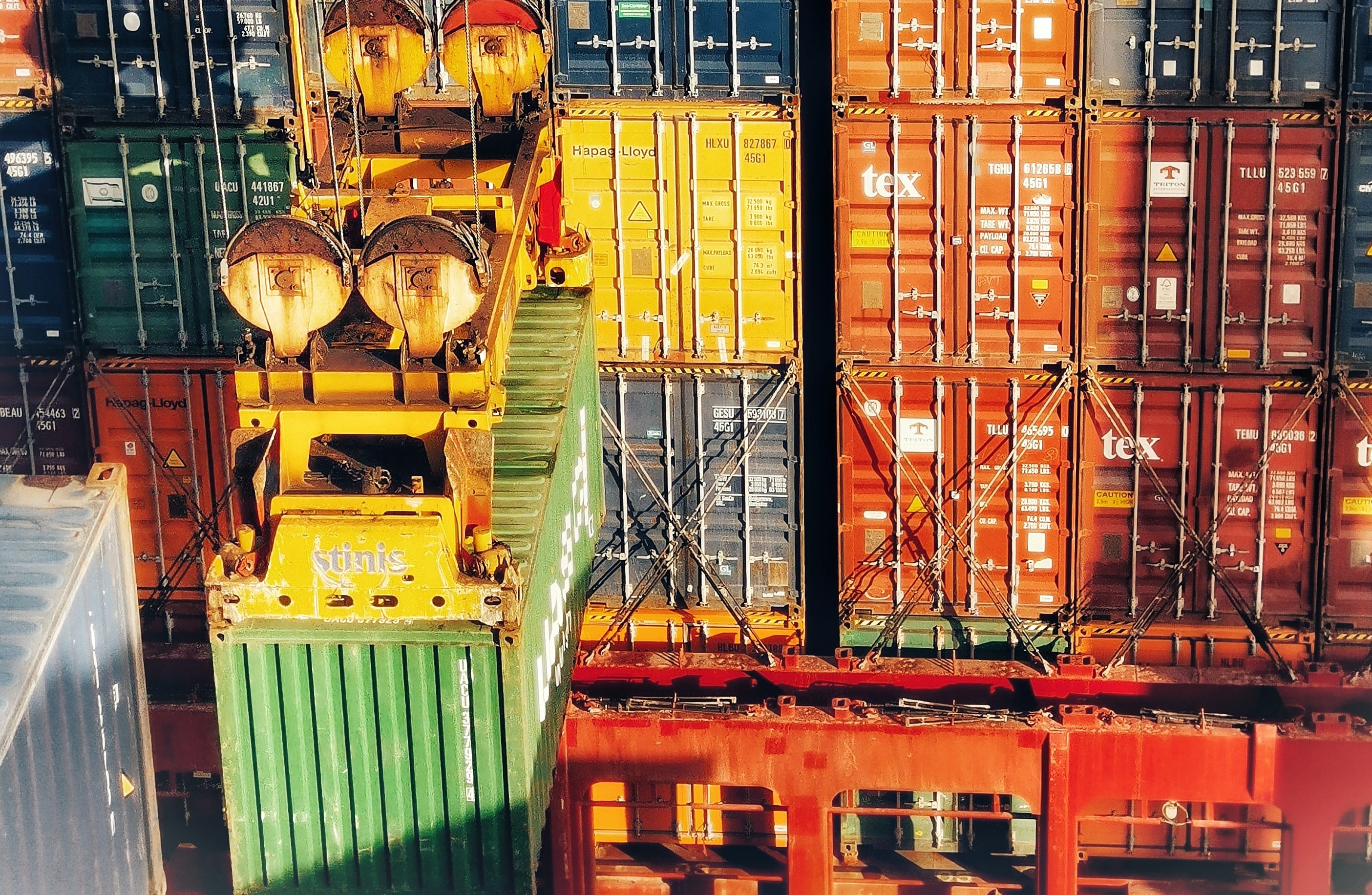Recently, there has been considerable debate about the phenomenon defined as the decoupling between transport demand and economic trends measured by the simplest of indicators, i.e. GDP.
While it would be more appropriate to measure this phenomenon not only in relation to transportation by sea, but in terms of the demand for logistics services (i.e. activities supporting the entire manufacturing industry supply chain), to say that the increased demand for logistics activities does not create wealth for the country is, in my opinion, incorrect. Likewise, it is also wrong to measure the number of people employed in the port industry as a way to gauge the prosperity of a sector. For example, many activities in the port were carried out manually less than twenty years ago, while today entering a terminal is like entering a huge amusement park with remotely guided AGVs and RTGs.
If we analyze the following graph, we realize that the trend in the demand for ocean carriage in the container sector (but the same is true for the dry bulk sector) has a symmetrical pattern (correlation index of about 0.90) in relation to the GDP; but what changes over time (particularly over the last 10 years) is the magnitude of the phenomenon.
Compared to the past, when variations in GDP corresponded to a “multiplying” growth effect of 2.5 times, today this effect is measurable in less than 1.5 times. This phenomenon refers not only to consumer goods, largely transported in containers, but also to raw and semi – manufactured materials.

But let’s see how our country has performed in relation to this phenomenon. The following graph is self-explanatory. It clearly illustrates the lack of global vision in logistics, understood not only as mere transportation in its various modes, but as a connecting link between the beginning of the manufacturing processes and the final consumers.
As Ivano Russo and Zeno D’Agostino correctly pointed out recently in Port News our country lacks two basic elements that are the causes and not the effect of the demand for logistics: 1) an excessive focus on hardware (the infrastructure) and a lack of attention to software (the logistic processes) with an evident waste of financial resources in unnecessary, duplicate infrastructural projects. On the other hand, it is well known, since the nostalgic times of the beginning of the last century, that great infrastructural projects make politicians go down in history, rather than the intelligent use of rules and knowledge; 2) Without really making logistics work for industrial supply chains, there is a risk of becoming mere transport providers. The latter, ironically, is sometimes supplied by non-Italian companies, just look at the case of railway companies operating in Italy, or of road transport companies themselves (a recent example is the lack of Italian drivers)

If we now analyze the figures in the 2009-2019 period, we see they clearly reflect what we said before. Against an average annual GDP trend (2009-2019) of -0.25%, what has not grown in our ports is the bulk goods sector, which shows that our country has gradually lost its manufacturing share to the advantage of other countries, including neighboring ones.
The trend in the container sector remained higher than the GDP and slightly greater than the total growth rate of traffic in Italian ports. This is a further confirmation that our country is less independent from the point of view of manufacturing mass consumer goods.
To sum up, the development of the Italian maritime logistics sector has certain common characteristics as can be seen from the growth rate of RORO traffic. This is due both to the development of the maritime mode as an alternative to the road one, both in terms of costs and flexibility, as well as the need, in the absence of junction areas that can act as a logistics system (real Freight villages or logistic platforms) to ensure “on time” and “timely” supplies in consumer markets.
It is hoped that such banal observations can serve as a guide for those who have decision-making responsibilities within the investment proposals aimed at finalizing the National Recovery and Resilience Plan in order to generate unnecessary “cathedrals” totally dissociated from the needs of logistics that, we repeat, cannot be identified only with the concept of transport.
This could be a stimulus to promote what are defined as “Integrated Logistic Systems” not referring to the mere port complex but to entire regional areas, in line with what is happening in Trieste.
Translation by Giles Foster




